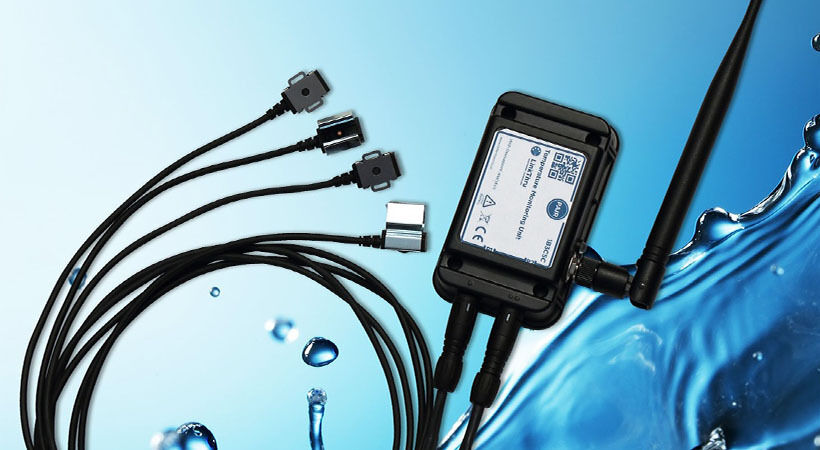Kevin Belben, technical applications manager at leading water management specialists, Cistermiser, outlines how remote IoT monitoring of water system temperatures and flow events can play a key role when re-commissioning or repurposing of buildings that have been temporarily mothballed, in order to manage building occupancy levels safely.
Lockdowns across the UK have posed a demanding challenge for us all, but it is now abundantly clear that planning to return to something approaching “business as usual” presents innumerable challenges for anyone involved in recommissioning, repurposing or designing and constructing new buildings. These challenges are especially evident when it comes to the water systems in buildings.
During the COVID-19 lockdowns, many buildings had to close to protect public health and reduce the spread of the virus. But now, as businesses and organisations start to get back to normal as restrictions are lifted, it is important to ensure that public health continues to be protected.
A potential health risk relates to Legionella in water systems that have not been used during the lockdown periods, or that have been underutilised due to lower and flexing building demand. Buildings should have in place a risk assessment and a Water Safety Plan, but dormant water systems will result in bacterial growth, especially in warmer weather. All aspects of a buildings’ water systems need to be reviewed before re-opening fully or in part. In some cases, these reviews will be carried out by teams of people on the ground. But for some more forward-thinking organisations, this critical work is being carried out by state-of-the-art cloud driven solutions, like LinkThru TMU from Cistermiser, which is being deployed in numerous commercial and healthcare facilities across the UK.
What is TMU water monitoring?
In short, Intelligent Temperature Monitoring Units (TMUs) deliver automatic wireless monitoring, providing real-time temperature readings on a computer screen, in order to track and monitor hot and cold water temperatures in pipework systems which are critical to risk assessments. A connected TMU can be retrofittable and is typically fitted onto water outlet pipework, distribution pipework including risers, calorifiers, cold water storage tanks and many other sentinel points across a building’s water system.
Each TMU takes a reading every ten seconds and then sends temperature and flow event data to a cloud-based portal on an hourly basis. Recorded data includes maximum, minimum and average temperatures. The sensor also records any flow events, such as outlets being utilised. The data readings are analysed by the device’s inbuilt software, batched and sent up back to the cloud, and then on to the user’s preferred interface which might be a phone, tablet or PC. The powerful data delivered by installed TMUs can help to show where sections of a building’s water system have remained safe and are operating to specified parameters (and therefore do not need excessive flushing) and flag areas that may require specific attention.
In premises where TMUs have been installed, constant real-time IoT monitoring will show if flushing has been carried out correctly and appropriate hot and cold temperatures are being reached. Over-stretched technical resources can then be deployed selectively to address defined issues that may be identified. Building owners and Estates Facilities Management teams both benefit greatly from increased visibility, as well as added peace of mind.
The Power of Data
In developing the perfect marriage of cloud-based data storage and analysis technology to robust, specialist hardware for remote sensing and monitoring of water temperatures and outlet usage, Cistermiser has tried to counter each of the challenges that currently face estates teams: to ease the burden on time and labour and to eliminate the potential for human error.
However, it’s the power of the data, the knowledge part of the solution where the system truly comes into its own. Legislative requirements are of course a primary concern - in developing the system we continually referred to HTM guidelines, for instance, in setting the software’s recommended default temperature ranges for outlet types. HTM and HSE L8 ACoP guidance also emphasises the need to ensure water doesn’t stagnate, and of accurate record-keeping. This means LinkThru users have peace of mind that they’re monitoring and recording what they need to in order to best protect against the threat of Legionella.
But the system goes way beyond this to offer previously inaccessible information in real time and for those who want to really maximise use of the data, reports can be set up to indicate how water is (or isn’t) being used in specific rooms and extrapolating this one step further, can profile user behaviour and deploy optimal resource solutions. For example, if a report shows that most of the activations of a particular TMV are early in the morning or early evening, this may give an estates manager a good idea on when to send cleaners in or schedule water quality sampling at appropriate times. The automatic temperature monitoring facility not only detects temperatures which could lead to Legionella colonisation, but also those that might pose a scalding risk, or, conversely, a risk of pipes freezing. It will also help users identify under-used outlets or, for example, taps or showers left running.
Despite its critical function, water management has traditionally been perceived as a problem-child, approached in a fragmented and sometimes inconsistent way across the sector. We aim to change this for good.
For more on LinkThru and Cistermiser’s range of Tank To Tap solutions, visit www.cistermiser.co.uk

